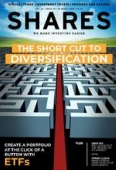Shares in FTSE 100 distribution and services group Bunzl (BNZL) came under big pressure on on 17 April when it revealed a slowdown in trading.
The company, which provides businesses with items like coffee cups or cleaning products which are not sold to customers but are essential for their day-to-day operations, is often considered to be a bellwether for the economy.
In its first quarter trading update the firm reported that revenues were up just 2.5% adjusting for the number of trading days with underlying growth of just 1.5%.
This marked a significant slowdown from 2018 when Bunzl reported full year revenues up 6% with underlying growth of over 4%.
The main cause is North America where the company makes 50% of its operating profit.
Underlying revenue growth in this territory was just 1% in the first quarter compared with more than 4% last year when it won significant additional grocery business. However, the additional grocery business wasn’t fully absorbed until the second quarter last year.
In theory therefore the comparison with last year’s first quarter should have been fairly easy and given that the second quarter last year includes the new business wins, North American underlying revenue growth in this year’s second quarter could look even weaker than the first quarter.
‹ Previous2019-04-18Next ›

 magazine
magazine








